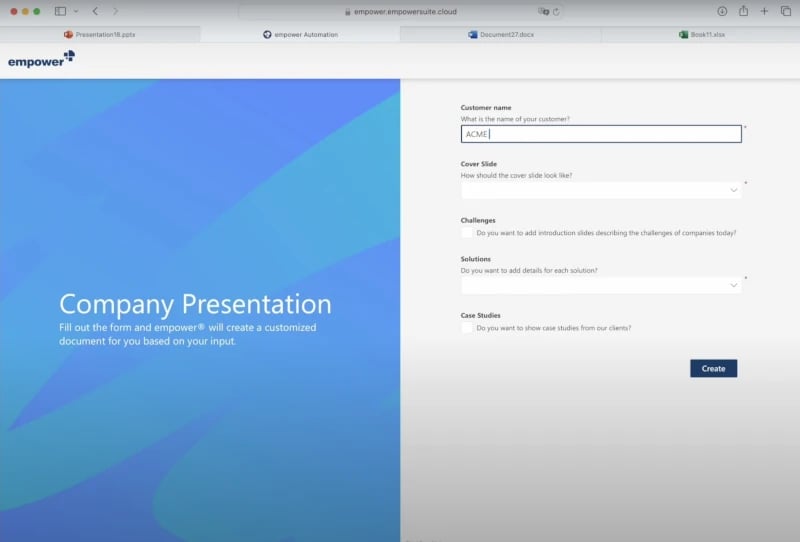Web add-ins: how to streamline your work in Microsoft 365
In the age of digital innovation, web applications are becoming increasingly popular and powerful. A key component that helps extend and personalize the functionality of web applications is add-ins developed specifically for the applications. The web add-ins.
Web add-ins vs. desktop add-ins
Web add-ins are software components that integrate with a web browser to provide additional functionality or services. These add-ins can be used to extend the functionality of the browser, automate certain tasks, or improve the user experience. Typically, web add-ins are developed using web technologies such as HTML, CSS, and JavaScript. In general, web add-ins offer the same advantages as web applications. They are platform-independent, easily accessible, easier to update, and don't require local installation. Web add-ins also have the advantage of being generally more stable and secure because of the sandboxing technology they use, so they won't cause host applications to crash or be delayed in launching. However, many web add-ins are not yet comparable to desktop add-ins in terms of functionality.
A desktop add-in is an extension designed specifically for desktop applications. It can be integrated into software applications that run on desktop operating systems such as Windows, MacOS, or Linux. Most Microsoft desktop applications have a special interface for add-ins called the Component Object Model (COM). Desktop add-ins are often written using languages and frameworks appropriate for the desktop platform, such as C# for Windows applications. Traditional COM add-ins cannot be integrated into a web application.
Web add-ins and desktop add-ins differ mainly in the way they are executed and displayed.
Evolution of web add-ins
In the early days of the World Wide Web, simple browser extensions were developed to perform basic functions such as blocking pop-up windows or adding toolbars. With the advent of JavaScript, interactive and dynamic websites became possible. This enabled the development of browser extensions and widgets that enhanced user interaction.
In the 2000s, browser plug-ins became increasingly popular. These plug-ins greatly expanded the functionality of web browsers, enabling things like playing multimedia content, storing bookmarks in the cloud, and personalizing browsers. With the introduction of Office web add-ins, as enabled by Microsoft's Visual Studio Tools for Office (VSTO) framework, a phase of integrating web add-ins into desktop applications began. This extended the functionality of Office applications and enabled the seamless integration of third-party services.
In recent years, browser extensions and add-ins have proliferated, offering users a wide range of features. These range from security extensions to ad blockers and productivity tools. With the development of web technologies such as HTML5, CSS3, and JavaScript, it has become possible to develop cross-platform web add-ins. These can work in different web browsers and on different devices.

Recently, web add-ins, especially in Office applications, have become more powerful and intelligent through the integration of AI and machine learning. This enables automated data mining, intelligent suggestions, and advanced analytics.
Selection of web add-ins
The selection of web add-ins requires careful review and consideration of several factors to ensure that the extensions meet the needs and goals of the organization. The following issues are relevant:
- Clearly define the specific requirements and objectives that the web add-in must meet. What features are needed and how will they enhance existing workflows?
- Review the security policies of the web add-in. Ensure that the add-in doesn't pose a security risk and that it complies with privacy regulations.
- Verify compatibility with the web browsers and applications in use. A web add-in should work properly in the desired environment without causing conflicts with other extensions or applications.
- Evaluate the ease of use and intuitiveness of the web add-in. A simple and efficient user interface helps improve user adoption and productivity.
- Review available development resources and support mechanisms. It's helpful to ensure that the web add-in is supported by a reliable development team and that regular updates and maintenance are offered.
- Clearly communicate the costs and licensing terms for the web add-in. It's important to understand the total cost, including any hidden fees or upgrade costs.
- Read the reviews and experiences of other users or companies that have already used the web add-in. This can provide information about actual performance and reliability
empower® web add-ins
empower® web add-Ins are integrated directly into the web versions of Word, PowerPoint, and Excel. This makes your work in the applications easier, more consistent, and more efficient.
empower® web add-in in PowerPoint
With the empower® library, you can simply select an existing template and use it for your presentation. You can also use the web add-In to create a complete presentation. Simply select the desired slides from the empower® library and insert them with a single click. Or you can use the empower® automation tool: enter the key data for your presentation in the wizard and the presentation will be assembled automatically.

empower® web add-in in Word
You can also use the empower® library to create a complete document in Word based on a template. The advantage is that the documents are immediately created in compliance with brand and legal requirements using the current profile data. Alternatively, documents can be created automatically, as in PowerPoint. Simply select the appropriate template and fill out a short form. And that's it. The finished document is ready to be edited, downloaded, or sent to the client.
empower® web add-in in Excel
The empower® library is also integrated directly into the web application in Excel. Again, you can start with a branded template or browse and use pre-built dashboards.
Watch the video to learn more about the empower® web add-ins:
Do you have questions about the empower® web add-ins? Contact us, we are happy to answer your questions!
You May Also Like
Related articles

Web applications on the rise: the end of COM add-ins?

Add-in to centrally manage Word documents and templates


